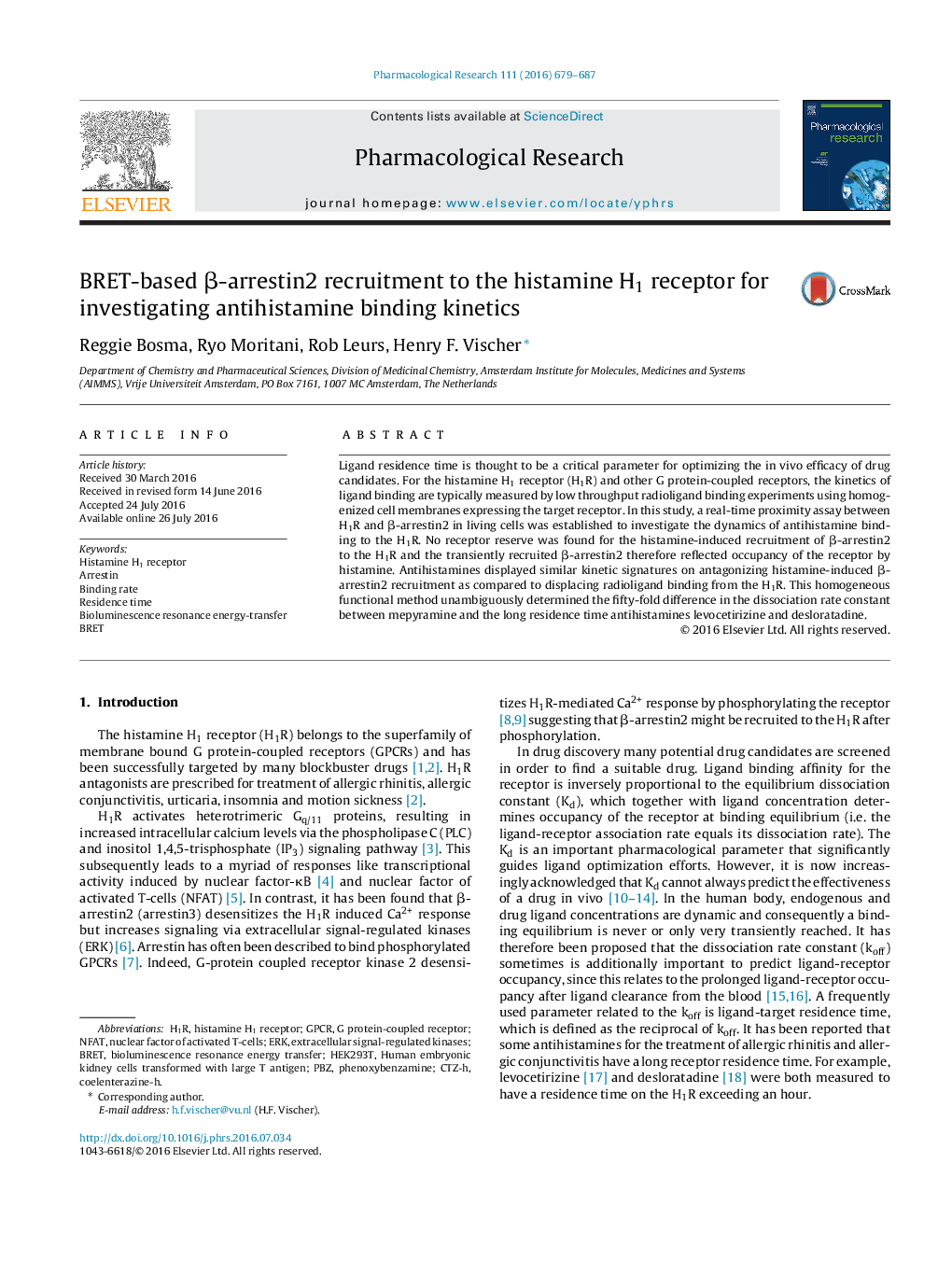| Article ID | Journal | Published Year | Pages | File Type |
|---|---|---|---|---|
| 5843573 | Pharmacological Research | 2016 | 9 Pages |
Ligand residence time is thought to be a critical parameter for optimizing the in vivo efficacy of drug candidates. For the histamine H1 receptor (H1R) and other G protein-coupled receptors, the kinetics of ligand binding are typically measured by low throughput radioligand binding experiments using homogenized cell membranes expressing the target receptor. In this study, a real-time proximity assay between H1R and β-arrestin2 in living cells was established to investigate the dynamics of antihistamine binding to the H1R. No receptor reserve was found for the histamine-induced recruitment of β-arrestin2 to the H1R and the transiently recruited β-arrestin2 therefore reflected occupancy of the receptor by histamine. Antihistamines displayed similar kinetic signatures on antagonizing histamine-induced β-arrestin2 recruitment as compared to displacing radioligand binding from the H1R. This homogeneous functional method unambiguously determined the fifty-fold difference in the dissociation rate constant between mepyramine and the long residence time antihistamines levocetirizine and desloratadine.
Graphical abstractDownload high-res image (191KB)Download full-size image
